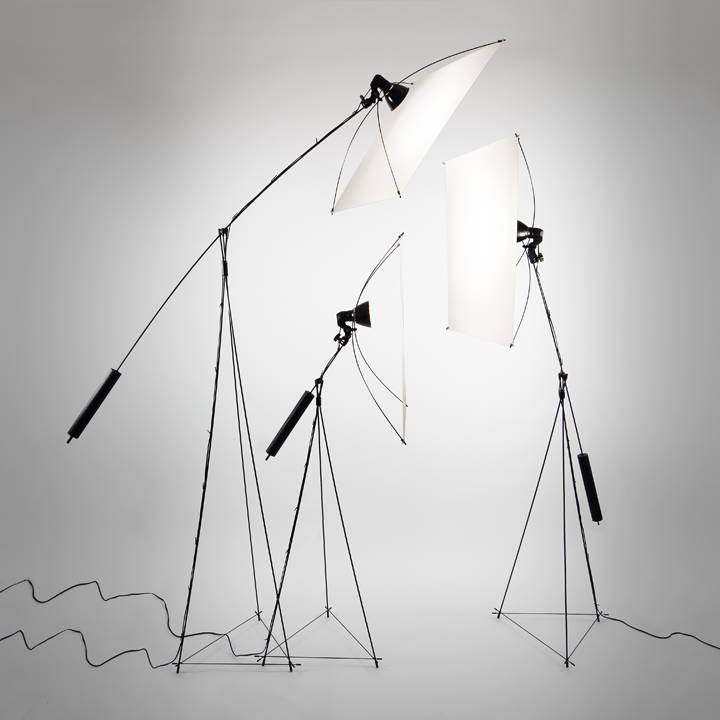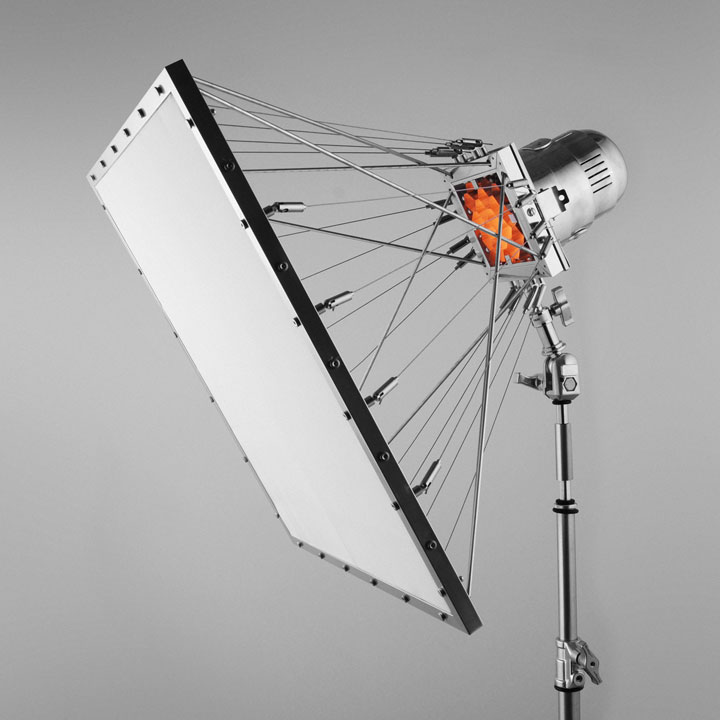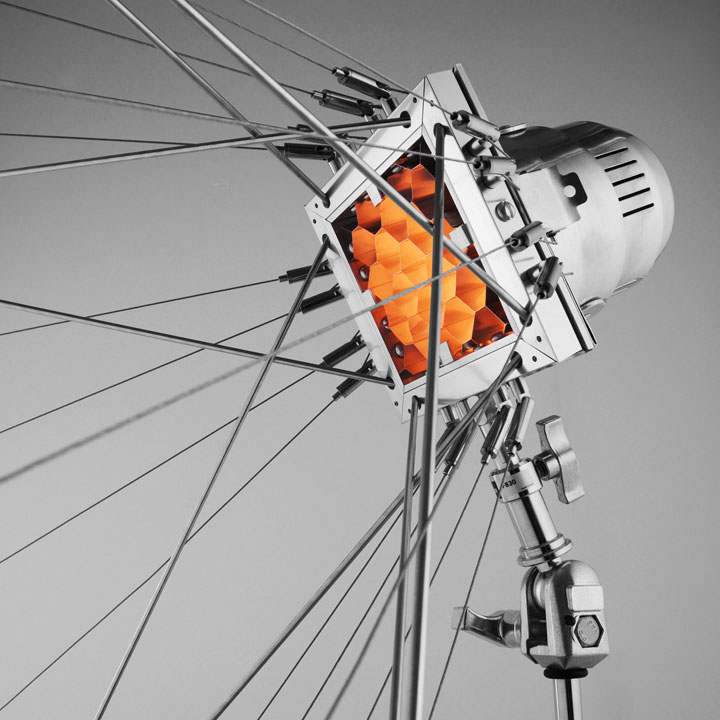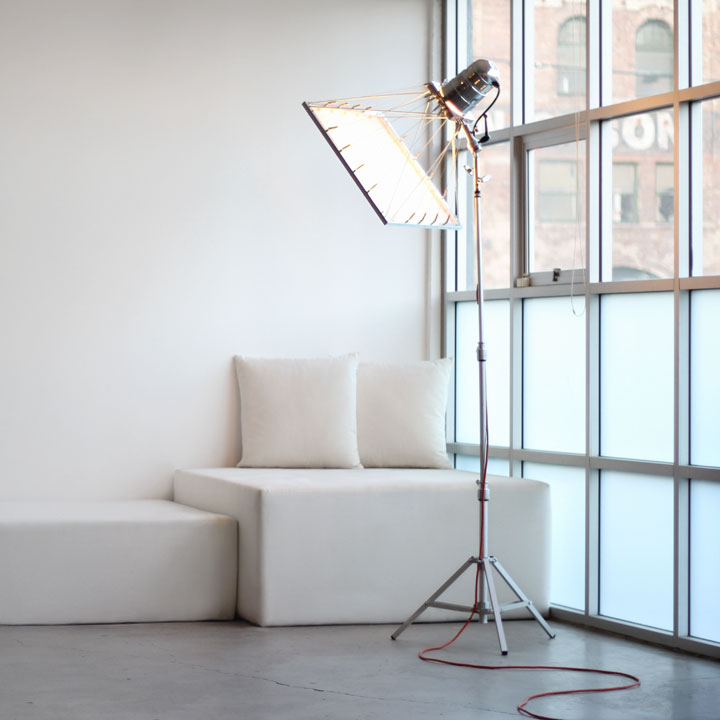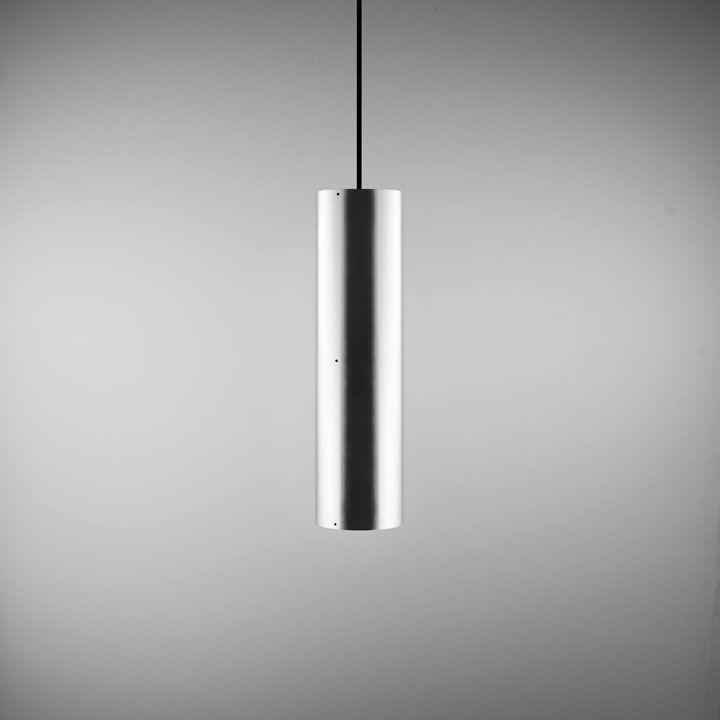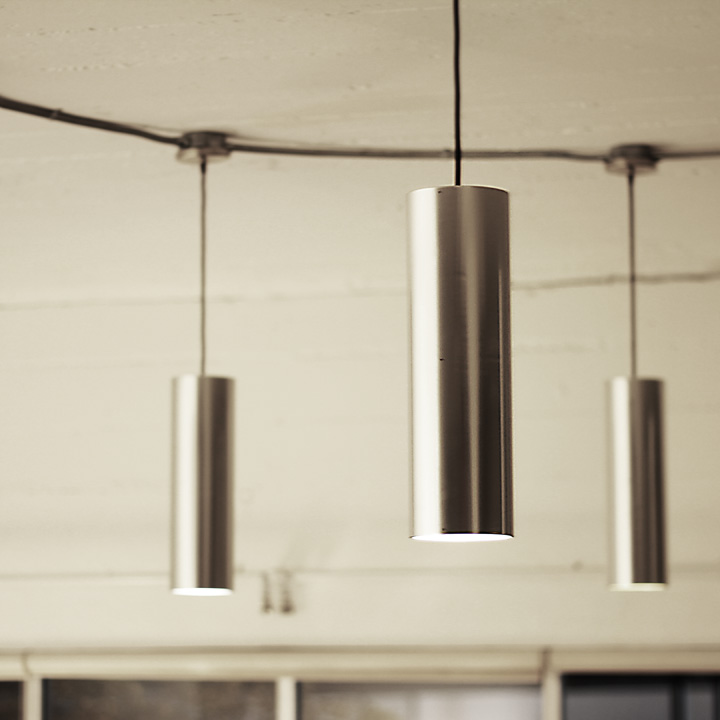|
Si-Huis Installations Studio quality domestic lighting and furniture
I was asked by my friend to review and edit his artwork, a sizable collection of oil paintings and computer illustrations. I guessed that it would take a few days to go through it all. “I’ll do it,” I said. “But... I’ll have to build a suitable light view the artwork with, otherwise I’ll strain my eyes.” I then designed and built a diffusing lightshade using foam board and masking tape, which worked well. So well, that I developed the design, and I built one which used an industry standard can lamp, with a tensegrity-type structure made of hand polished and anodized aluminum, steel cable, silk for the diffuser, industry standard color gel filters and LED bulb. It was designed to produce the ultimate quality light for a either a studio or domestic environment, using focusing, multiple layers of diffusion, and color correction, with no glare from the lamp itself, from any angle. The same friend that asked me to look through his artwork, said that it looked like a bi-plane wing. Which it does, kinda. No consideration was given to the decorative qualities of the lamp, though a strict adherence to function (and quality) over form gives products a unique aesthetic all of their own. All of the aluminum for the lamps is aerospace-grade, anodized and hand polished to a fine sheen by fabricators in Long Beach, California, contractors to both the US military and space program. The ‘lampshades’ were designed to be tools in the strictest sense of the word, engineered to be efficient, and constructed to last. Silk, although beautiful, was chosen because it has a tensile strength greater than steel, for its dimensional stability, and the weave of the silk is fine enough so that light cannot pass through the individual fibers. I then made even more lamps, to ‘light’ the lamps I had just made, so that I could photograph the lamps. A professional photographer might tell you that an electronic flash is required in the studio in order to freeze motion. Incandescent lights are not bright enough to allow for brief-enough exposures and/or narrow apertures, and in comparison to daylight or flash/strobe, the light is warm colored. Therefore, the lighting, which was used for lighting the lighting (for photography purposes), uses flash heads and not LED’s (though LED’s are capable of matching the color of flash/strobe but not the brightness required for a quality photograph). The photographs here were illuminated using our own custom lampshades, along with Vivitar 285’s - the most popular professional and enthusiast flash unit in the world, which has remained in production for over thirty years since the launch of the original 283. Most seasoned professionals have at least one or more of these old workhorses in their kit. They are both inexpensive and unassuming, but powerful enough to get the job done, and reliable. Daylight, flash/strobe light, incandescent light and fluorescent light may all appear to be ‘white’ light but, in fact, daylight (at midday) and flash/strobe light are the only two white lights amongst them. Fluorescent lighting is actually green and incandescent lighting is orange. The white part of any photograph taken under these other lights will either be green or orange, but our minds perceive the ‘white-point’ as white. Negative film processing adjusts for it. The subject of color perception is called colorimetry and the natural phenomenon of color cast compensation by the eyes is called a metamerism. Modern digital cameras correct for this phenomenon; it’s called, ‘white balance’ Our eyes compensate for color as well as brightness, and every light source has its own unique color, as well as brightness level. Just as the brightness of light can affect our mood and experience, so can its color. The difference may be subtle, but critical, especially over time. Thomas Edison developed the first electric lighting system over a hundred years ago, using incandescent bulbs. These bulbs heat a metal filament which is contained within a vacuum, or an inert gas, to prevent oxidation which would quickly break the filament. The color cast of the resulting light is orange, like a sunset or a fire, but it is white enough to be able to view a broad spectrum of colors by its light. The light comes from a single source as it would a candle, which creates an unnaturally high contrast between the highlights and the shadows. To reduce the contrast and soften the shadows, a lampshade can be used to diffuse the light. Paper, plastic, silk or glass are historically the most traditional materials. The emitted light refracts in different ways, and takes on the quality and color of the material that it passes through. 40% of the western world’s energy is consumed by buildings for heating, cooling and lighting. LED bulbs consume 10% as much energy as a regular incandescent bulbs. They are more expensive than incancesdents, but they will last 20 years without needing to be replaced, and lighting bills wil be reduced by 90% for the life of the bulb. Generating light efficiently is part of the solution. Using the light efficiently is another. If the generated light is focused and diffused correctly (which also reduces glare and increases clarity), then more of the light is being utilized and less is being wasted, much like the insulating of a house saves on heating and cooling bills, and fixing leaking pipes saves water. Our latest lamps have been designed to utilize the most advanced LED lightbulb on the market, the 8.5W Philips Hue Bulb, available exclusively at Apple Stores, which features unlimited options for light colors and is wifi controllable using iPhone, iPad or iPod. This new bulb maybe well be the most significant change in the lighting industry since Edison’s electric incandescent lightbulb (though very sensibly on the part of Philips, the socket remains the same). Our Si-Huis Crane Lamp (patent pending), was designed for this new generation of bulbs; it is made of feather-light carbon fiber and fiberglass composites, not much wider than the lamp’s power cable, with rubber counterweights for combined safety, and an energy-returning, ultra-stable tripod stand. The diffuser is made of polyester single-ply membrane, similar to the material used for extremely high altitude balloons. Importantly, the lamp has been designed for mass-production, and the time and cost of producing them is far less than our original Bi-Plane floor lamp, yet it retains the function. Our first batch of Crane Lamps (now Vera lamps) sold out completely and we have now sold over 200 lampshades and lamp products all across America.
|
